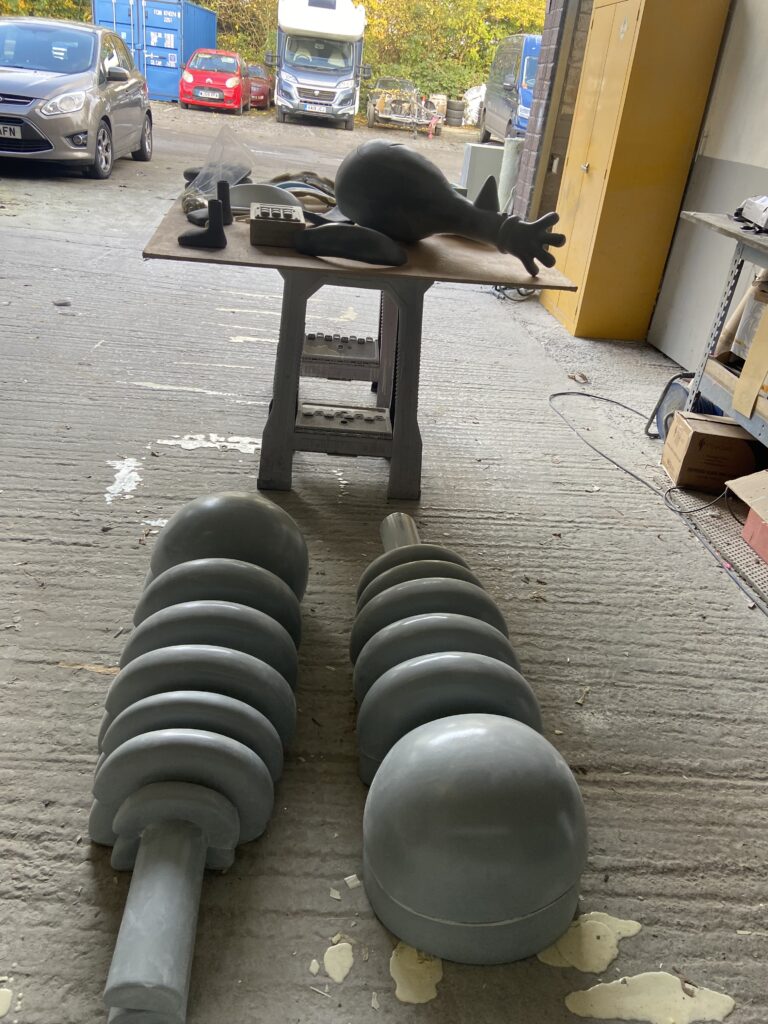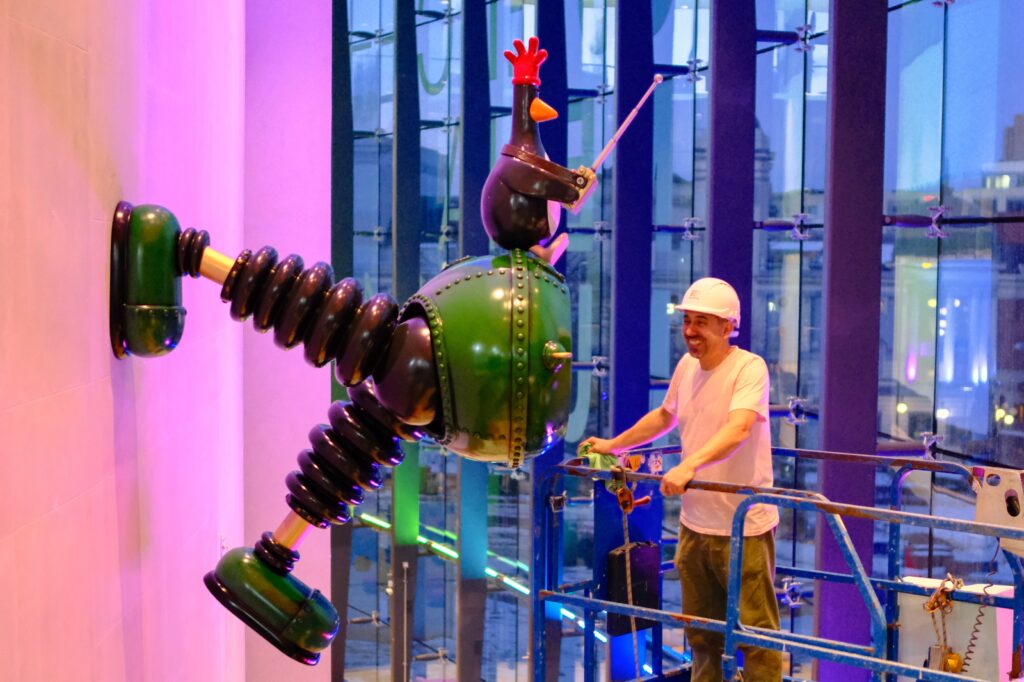How did your journey working with Aardman begin, and how has your work with them evolved over time?
I started working for Aardman as a modelmaker on Chicken Run, way back in 2000! I worked in the film studio for 13 years on some of their most famous films. I ended up being a supervisor but always loved sculpting and wanted to pursue that, so I left Aardman in 2011 to start up my own company, Alban Studios.
I still work for Aardman sculpting the characters for their feature films, but it’s also nice to branch out and work on other projects and TV commercials. Now I do fabrication and sculpting in all sizes for films and TV, but Aardman productions still have a place in my heart.
How did this compare to previous projects you’ve worked on, at Aardman and beyond?
I think this is the largest sculpture I have done for Aardman. I have produced large scale sculptures before, but I’m known at Aardman for sculpting their small animation puppets. This was a truly unique project for me. As you can imagine, you don’t get to hang a massive sculpture off a wall nine meters high very often.
How did you approach adapting the original design into a larger-scale replica for public display? Were there any particular challenges?
Firstly, we took the original sculpt and scanned it in 3D to produce a digital file. It was then redesigned in various parts to enable us to fabricate them and reassemble it. We used a mixture of traditional mould-making methods and also more cutting-edge techniques. We produced some of the larger parts by machining moulds with a five-axis CNC milling machine.
The main challenge with the project at the start was to make the sculpture as light as possible, as we knew this would make it easier for us to mount it to the wall. The design of the metal frame inside the sculpture was also designed digitally to enable us to have mounting points for all the various parts of the sculpture hidden inside it.


What elements of the original techno trousers did you feel were most important to retain in the replica?
We tried to get as close to the original film version as possible. I think the weathering paint work ended up looking particularly good.
Was there a particular moment in the creation of the techno trousers that you found especially exciting or rewarding?
There was a point in the making of the trousers where it would have been a lot easier to make the mounting plate that attaches to the wall visible from the outside of the shoe. I really didn’t want that, so we went the extra mile to hide the plate within the shoe, giving the sculpture the real illusion of it walking down the wall like in the film. It’s quite amazing that the whole sculpture is held on with four bolts on a plate that’s only slightly bigger than an A4 piece of paper. The most exciting part of the job was certainly installing it in the museum. There is nothing better than seeing your work from such a great vantage point.

What do you hope visitors take away from seeing the object in person?
I think with a lot of the Aardman exhibitions and projects, one of the aims is to make people connect with the craft and art of the work. The sculpture certainly sparks the imagination as it looks like it’s defying gravity as it walks down the wall. I also hope the visitors spot the little details like the petrol cap at the back of the trousers and the leather strap on Feather McGraw’s remote control.
Why do you think The Wrong Trousers has remained such an iconic film, even after all these years?
I think for me it’s one of the all-time classic animated films. In my opinion, Feathers McGraw is one of the best evil masterminds, even though he doesn’t talk in the whole film.
